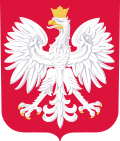Early modern period
Heraldic adoptions were part of a broad plan devised by the Polish nobility to pander to the aspirations of ambitious city burghers and patricians, thus securing political allies for themselves. Heraldic adoptions became particularly popular in the 15th century and the Polish nobility willingly adopted new members into their heraldic clans as they knew this would not entail any claims on their estates, for instance, from inheritance rights. Ennoblement involved specific diplomatic procedures and required aspiring city burghers and patricians to make various financial contributions on behalf of Poland's monarchy and nobility, for example through taxes, loans, endowments or gifts.
Over time, Poland's nobles became increasingly reluctant to over-expand the nobility (or rather saw need to prevent it), since heraldic adoption was open to the possibility of abuse, adoption for a fee, buying nobility (especially by wealthy city burghers) and uncontrolled expansion of the nobility. This caused the disappearance of ennoblement by heraldic adoption by the end of the 16th century, and also limited ennoblement in favour of the King by requiring parliamentary consent from Poland's general sejm .
By 1578, royal prerogative was widely vested in Poland's general sejm and each ennoblement required parliamentary consent. From 1601, only Poland's parliament—the general sejm, was privileged by an act of law to approve and confer ennoblement. By 1633, heraldic adoption was abolished.
From 1669, the ennobled who came mainly by then from the burgher class would only receive skartabellat (similar to the German Briefadel , or Letters patent ), a specific form of institution and ennoblement introduced by pacta conventa , a lower class of nobility where newly created nobles could only hold public offices and perform legations not until after the third generation; from 1775 an obligation was imposed on newly created nobles possessing (purchasing) land estate.
During the reign of Stanisław August Poniatowski (r. 1764 to 1795), almost half of the total number of Polish ennoblements was made. Under the reigns of Stanisław Leszczyński and Stanisław August Poniatowski, both were also known for circumventing the restrictions placed on conferring ennoblement, applying the so-called 'secret ennoblements', without parliamentary confirmation. Such ennoblement in fact did not give any prerogatives to Polish nobility and was mainly applied to foreigners. Without the consent of the general sejm, some Polish kings also granted personal nobility, without the right of inheritance, giving the title of Knight of the Golden Spur. Ennoblements, including secret ones, were often a way to fund the royal treasury or to reconcile supporters. Therefore, among others the right to ennoblement has also been usurped, for example, by the bishops of Kraków as the Dukes of Siewierz.

